Customer Experience Optimization: How to Make Clients Fall in Love with Your Products
Discover how to improve customer experience for your brand in the digital realm and beyond.
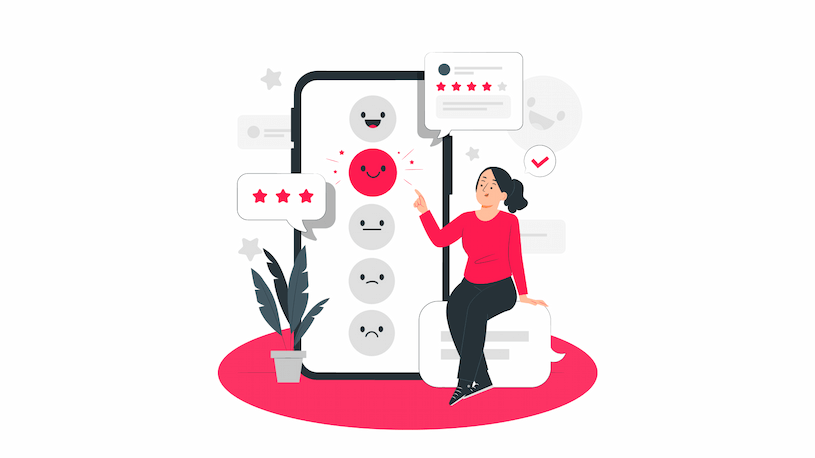
One could argue that customer experience optimization is an over-hyped concept. For example, why invest in a slick mobile app if you sell quality shoes at a lower price than the competition? However, we all know that when it comes to personal relationships, we are more likely to be remembered not for what we said or did, but for how we made the other person feel. To some extent, the same is true for customer-brand relationships. While great quality or a great price may bring a company some sales, they will never bring what a good customer experience can: long-term customer loyalty and trust. And these two are the key drivers of long-term business growth.
In this article, we'll explore the definition of CX, the reasons for improving customer experience, and the best practices for optimizing customer experience.
What is customer experience?
Customer experience (CX) refers to the overall perception and feeling about a company and its products, based on all kinds of interactions a person has with a brand along their customer journey.While it can be argued that customer experience is a subjective term, there are many studies on what makes good CX and how its quality affects customer loyalty and key business indicators.
4 types of customer experience
All customer experience can be subdivided into four general sub-types.
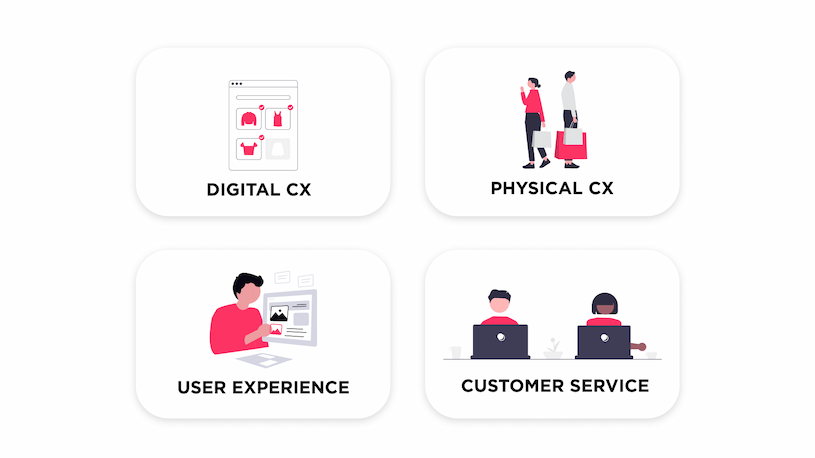
Digital customer experience. This type covers all customer-brand interactions that take place through digital channels, such as websites and mobile apps. Here, the quality of this type of CX is highly dependent on the interface and loading speed of the website or app, as well as the UX/UI design in general. For e-commerce or online platform companies, this type of CX is the most basic and defines how customers perceive a brand.
Physical experience. This type of CX is about real-world experiences. For example, how a visit to a bank branch or brick-and-mortar store affects a customer's perception of a brand. It includes the design of the space, the ease of navigation, and even details such as the air temperature and background music that create the ambiance of the place.
User experience. Finally, this type of CX focuses on the use and interaction with a company's products and services. Usability, interactivity, ease of use, security, and dozens of other aspects depending on the type of product play a key role. UX directly influences whether a customer will use or buy the product again or look for alternatives.
Customer service. This type of customer experience revolves around interactions with brand representatives at all stages of the customer journey. The defining characteristics of this type of CX are the speed of response to customer inquiries, the quality of agent responses, and the personalization of communications. Whether it's a chat with a shopping assistant in a store or a WhatsApp chat with a support team member, all of these interactions shape a customer's feelings about a brand.
5 Cs of customer service
The so-called five Cs of customer service are essential aspects that define its quality.
- Compensation is not just about monetary compensation for an unsatisfactory experience, but also about the company's willingness to correct its mistakes. Responding quickly to complaints and offering appropriate solutions greatly improves the customer's perception of the company.
- Culture. Corporate culture influences how employees interact with customers. Creating an environment that values customer care and satisfaction contributes to a positive customer experience.
- Communication. Effective communication is key to understanding customer needs. Transparency and accessibility of information help build trust and loyalty.
- Compassion. When employees understand and share customers' feelings, it creates a deep connection and increases the likelihood of repeat purchases. Showing genuine empathy is a powerful way to improve customer experience.
- Care. This includes not only providing quality service but also actively seeking to anticipate customer needs and offer additional solutions tailored to their preferences.
CX vs UX
No doubt we all mix up a few acronyms from time to time. And CX and UX are likely candidates. While customer experience (CX) refers to a customer's entire journey with a brand, including interactions such as marketing and customer support, user experience (UX) focuses on the experience of using a company's product or service, especially in a digital context. It focuses on ease of use, accessibility, and the emotional response that results from using a product. While both CX and UX are about customer satisfaction, as you can see, they are two very different concepts.
The importance of CX optimization
As Warren Buffett, CEO of Berkshire Hathaway, once said: "It takes 20 years to build a reputation and five minutes to ruin it. If you think about that, you’ll do things differently." By optimizing and improving the customer experience, a brand reduces the risk that a customer will leave a bad impression after interacting with a company and go to a competitor. Here are the top reasons to invest time and money in CX optimization.
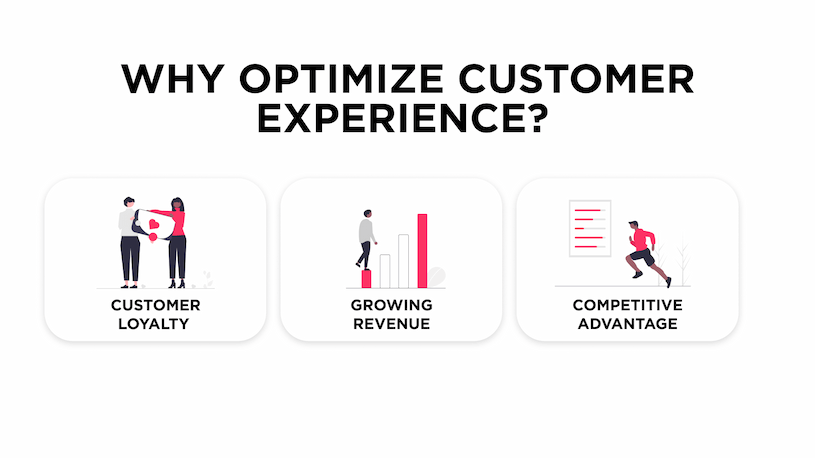
Improved customer loyalty
When a company strives to deliver a better customer experience, it creates a positive impression on its customers. This leads to increased loyalty, as satisfied customers are more likely to return for additional purchases and recommend the brand to friends and acquaintances. Loyal customers not only become repeat customers but can potentially become brand advocates, which significantly enhances the brand's reputation.
Growing revenue
Customer experience optimization has a direct impact on a company's financial performance. When customers are satisfied, they are willing to spend more on products and services. Studies show that companies with high levels of customer satisfaction outperform their competitors. In addition, it costs significantly more to acquire new customers than to retain existing ones, so investing in CX can dramatically improve a company's overall profitability.
Competitive advantage
It is no secret that customers are increasingly choosing brands that deliver the best customer experience. In a saturated marketplace, companies that strive to provide a better customer experience gain a distinct competitive advantage. If your company can differentiate itself through superior customer service and positive interactions, it can be the deciding factor for customers choosing between brands.
Key elements of CX optimization
What exactly are the ingredients of the best customer experience? Let's take a look.
Customer feedback loops
So how do you know what's best for your customers? There is no better way than to listen to what they have to say. Collecting, processing, and acting on customer feedback is one of the essential elements of customer experience optimization. The insights you gain help you understand your audience's preferences and tastes. Studies show that by focusing on customer feedback, companies can increase customer retention by 10-15%. Since it can cost up to five times more to acquire a new customer than to retain an existing one, such an increase is significant.
Given the abundance of digital channels, modern businesses have many options for gathering customer feedback. A brand can send out emails inviting customers to fill out forms built with SurveyMonkey or Google Forms and rate their customer experience. It is also important to monitor the brand's social media mentions and respond quickly to any public negative feedback. If the company has a customer app, it can also be used to collect feedback.
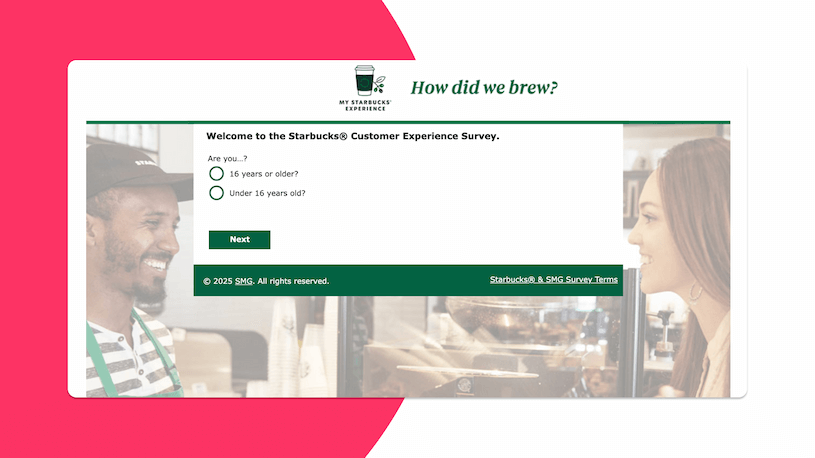
For example, Starbucks asks customers to rate their most recent store visit by completing the Customer Experience Survey on its website in exchange for coupons for future purchases. The company analyzes this feedback to make data-driven decisions about menu changes and store improvements, resulting in increased customer satisfaction and loyalty.
Personalization and customization
Adapting products and services to the preferences of individual customers or audience segments is essential to providing a unique customer experience that aligns with their interests. To implement such strategies, organizations can use analytics to segment audiences based on demographics, behavior, or preferences for targeted marketing campaigns. Including dynamic content on websites and applications that adapts to user behavior or location, as well as personalizing email marketing campaigns with customized subject lines and content, can further enhance the overall customer experience.
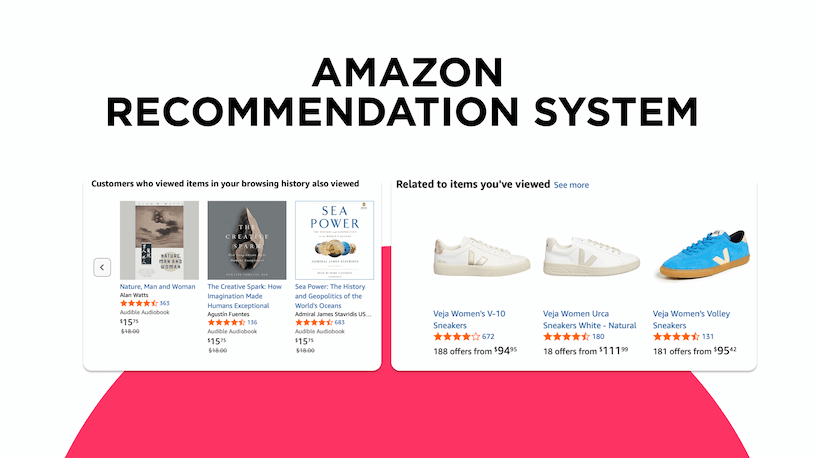
One of the good CX examples of effective personalization is Amazon, which uses sophisticated algorithms to analyze customer behavior and purchase history. The company's recommendation system suggests products based on past purchases and user interests, significantly increasing conversion rates. According to studies, more than one-third of Amazon's revenue comes from this recommendation engine.
Omnichannel engagement
A Harvard Business Review study shows that customers who engage with retailers through multiple channels are significantly more valuable in various ways. These omnichannel shoppers typically spend about 4% more during in-store visits and 10% more online than those who shop through a single channel. In addition, the more channels customers use, the more they spend in-store. For example, customers who interact with four or more channels tend to spend an average of 9% more in-store than those who use only a single channel.
An omnichannel approach ensures a consistent customer experience across online and offline channels. For example, users of the Sephora mobile app can check product availability in offline stores, while many fashion retailers offer a barcode scanning feature that allows shoppers to scan a code attached to a garment in a physical showroom and view styling suggestions or care instructions on their mobile phones. These and other methods ensure a seamless transition between offline and online shopping, enhancing the customer experience.
Data-driven decision making
Analytics plays a critical role in understanding customer behavior and optimizing the customer experience. It helps companies identify trends, measure effectiveness, and make informed decisions to deliver the best possible customer experience. This approach not only helps to tailor services and products to customer needs but also promotes customer loyalty and satisfaction.
Consider using customer analytics tools like Google Analytics or Tableau to track interactions and analyze data trends. In addition, A/B testing different elements of the company's website or marketing campaigns can help determine what resonates best with your audience. Finally, integrating predictive analytics can help you anticipate customer needs based on historical data, enabling proactive engagement that increases overall satisfaction.
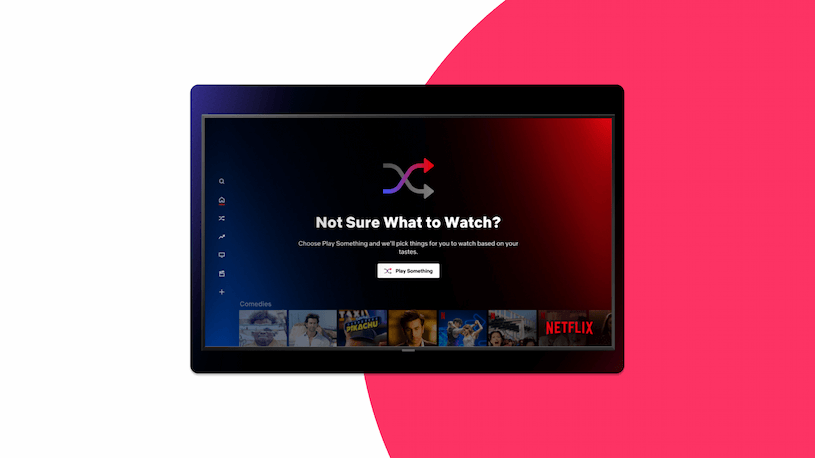
For instance, Netflix uses extensive data analytics to gain insights into viewer preferences. By analyzing viewing habits, the platform can recommend shows and movies that match individual tastes. As a result, 75% of what viewers watch on the platform comes from recommendations. The same goes for the "Play Something" feature that allows users to instantly stream a personalized show or movie without navigating through menus, utilizing AI-driven recommendations based on viewing history and popular trends. It is a great example of how reducing the effort required to find content, Netflix improves engagement and customer satisfaction.
CX optimization best practices
While every case is unique, and one company's CX best practices may not work for another, there are some proven tactics that lead to more satisfied customers.
Mapping customer journey
Following the logic that to catch a thief, you must think like a thief, customer experience success requires thinking like a customer. Start by understanding their journey with your brand down to minute details.
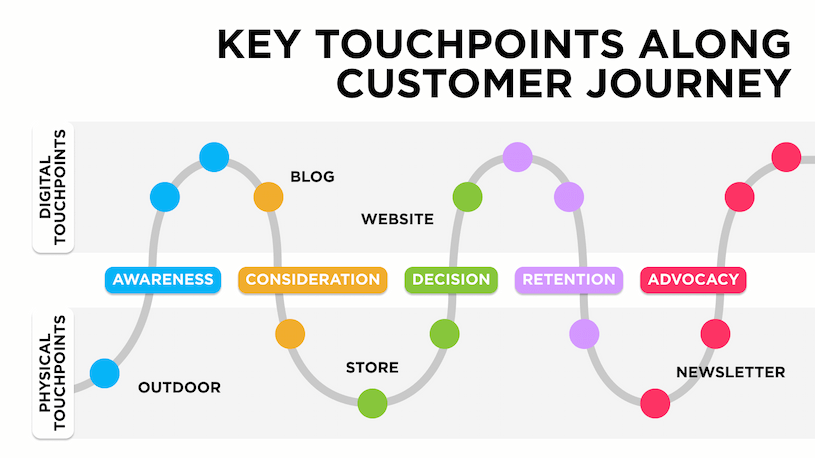
- Identify key touchpoints. Map every stage a customer goes through, from brand discovery to post-purchase support. Consider all possible variations and available sales/support channels.
- Leverage feedback. Use surveys and other tools to identify the moments when customers are most likely to encounter difficulties or have a poor experience.
- Visualize the process. Create a visual map of the customer journey to make it clear to the entire team. This will help everyone involved in the process see the big picture and work to improve each step.
Training employees on the best CX principles
If senior management only shares a vague vision of improvement and fails to clarify it for frontline employees, improving the customer experience will be difficult.
- Invest in training. Hold regular training sessions and seminars on how each department contributes to CX quality and how it impacts brand perception and key business metrics. This helps employees understand why a great customer experience is so valuable and how they can personally contribute to it.
- Make great customer service desirable. Encourage employees to share success stories about customer interactions and incorporate best practices into their daily work. This will help create a customer-centric environment.
Leveraging technology
With the rise of AI-based technologies, it's easier than ever to automate a significant portion of routine customer interactions and deliver high-level personalization that satisfies even the most demanding customers.

- Integrating CRM. Customer relationship management (CRM) systems allow a company to collect and analyze customer data, which helps personalize interactions and provide more relevant solutions. In addition, messaging solutions such as Umnico offer CRM integrations for popular text-based communication channels, allowing you to work with WhatsApp or Facebook chats directly within the CRM interface and synchronize all customer data with a single profile.
- Implementing chatbots can significantly speed up customer service by providing instant answers to frequently asked questions, freeing agents to handle more complex issues. Umnico's Chatbot uses ChatGPT technology to perform a variety of functions, including answering customer questions, collecting contact information, sending reminders, calculating order costs, accepting payments, and suggesting similar or related products.
Summing things up
Looking ahead, technologies such as AI, and virtual and augmented reality (VR and AR) offer new, more immersive, and engaging customer experiences and provide organizations with powerful predictive analytics. However, customer journey touchpoint analysis and employee training remain critical, as customer experience optimization is a continuous process that never stops.
Leverage customer experience best practices with an easy-to-use omnichannel messaging platform — Umnico. Receive and process customer requests from messengers, social media, live chat, and email in a single app. An intuitive chatbot builder, flexible automation, and more than 25 robust integrations are at your fingertips. Try Umnico for free with a free trial available to all new users.

Subscribe to Umnico news!
Be the first to get recommendations and up-to-date information
